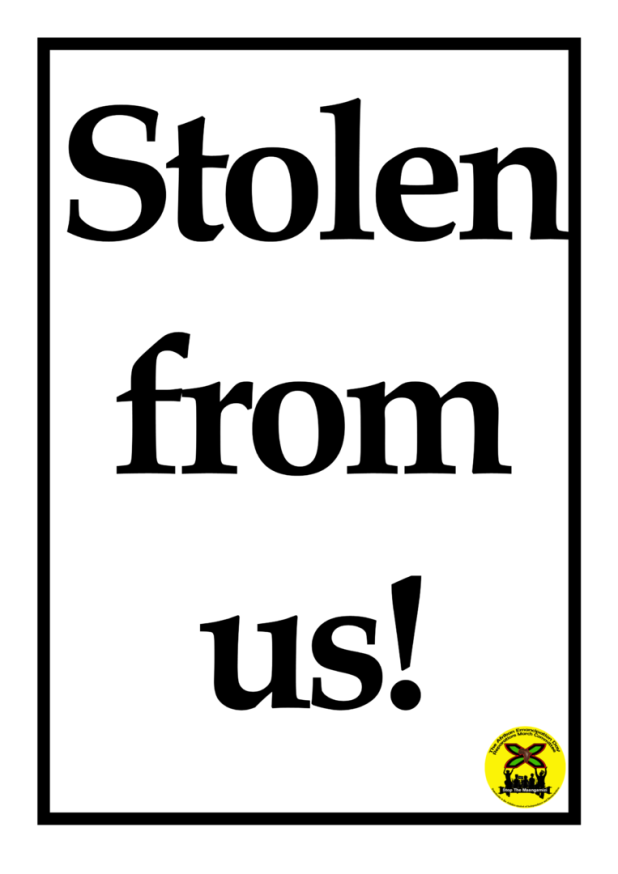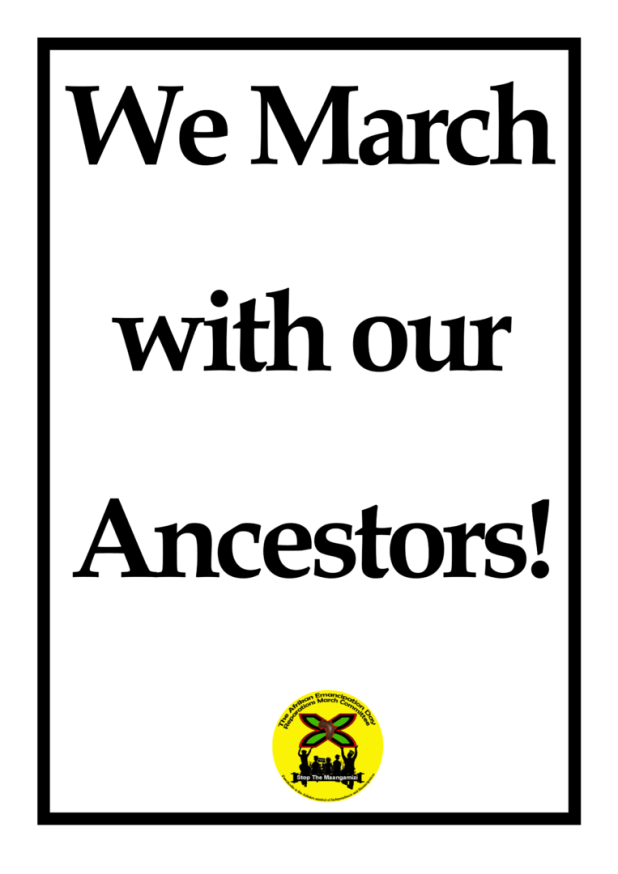Reparations March Creativity in Action: Suggested slogans for protest, signs, banners and placards
The role of protest art on a March is to make the struggle for reparations irresistible!
You can use your creative skills and talents in supporting the Afrikan Emancipation Day Reparations March. Banners and placards are tangible records of the opinions, perspectives, voices and messages of the protestors/Marchers. Part of Maangamizi (Afrikan Hellacaust) resistance is to resist with words, ideas and symbolism.Creative acts, such as the construction of banners or placards are non-violent methods of defiance. They are an important part of protest aesthetics and art.
Your banners and placards on the March are individual or collective ways of communicating relevant Maangamizi related or reparatory justice messages to local and global audiences.Such banners and placards are used as a medium for expressing grievances and dissatisfaction, identifyingmanifestations and legacies of the Maangamizi, making claims and/or offering solutions. They can also provide an insight into counter-thinking, ideas, policies or programmes that you, your group, organisation or community support, advocate for or believe in.
Know that no matter what your personal, organisational, community, political or ideological stance, the March is of historical significance. In years to come, even your banners will be considered an important part of Afrikan heritage communities political and cultural protest history within and beyond the UK.
Of course, you can also choose your own slogans, the key points to remember are that banners and placards should:
- Be readable, clear and eye-catching
- Educate and inform as to why you are on the March
- Convey a particular message about Maangamizi resistance or reparatory justice you want to share
- Express such views in creative ways
- Use text and imagery (photos, pictures, art work etc.) to make your banner or placard visually stand-out.
In case you want some inspiration, we also have come up with some slogans that we also encourage you to use. There is great valuein utilising slogans that others will also use as a mark of solidarity; a way of aligning yourself with others.
















